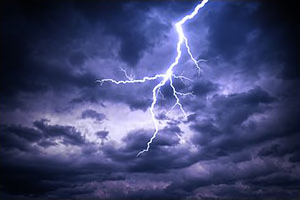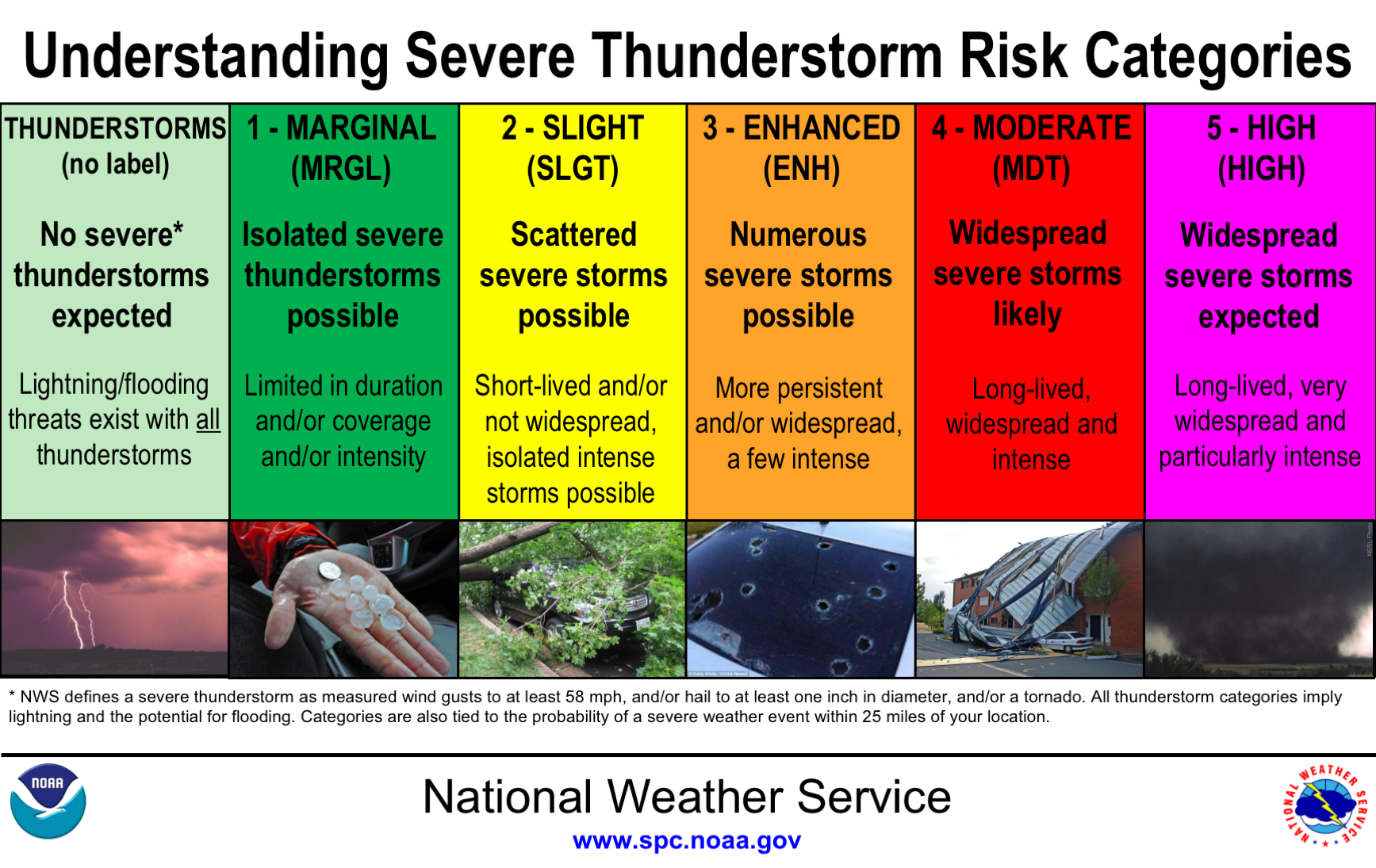Thunderstorm Index
Emergency Information
Thunderstorms can bring heavy rains (which can cause flash flooding), strong winds, hail, lightning and tornadoes. In a severe thunderstorm get inside a sturdy building and stay tuned to a battery-operated radio for weather information. Severe thunderstorms can strike at any time of the day or night. The heaviest volume of severe thunderstorms occurs from April through September.
Lightning is a major threat during a thunderstorm. In the United States, between 75 to 100 Americans are hit and killed each year by lightning. If you are caught outdoors, avoid natural lightning rods such as tall, isolated trees in an open area or the top of a hill and metal objects such as wire fences, golf clubs and metal tools. If you are swimming, get out of the water and seek shelter. If boating, return to shore. Inside your home; keep away from windows and doors, avoid use the telephone unless there's an emergency and don't use electrical appliances.

Precautions
If you see wires on the ground, DON'T GO NEAR THEM! Downed wires may be "live" and extremely dangerous. If you see downed wires, call your local electrical provider.
It is a myth that lightning never strikes twice in the same place. In fact, lightning will strike several times in the same place in the course of one discharge.
Danger Zones
While thunderstorms and lightning can be found throughout the United States, they are most likely to occur in the central and southern states.
What is a thunderstorm?
A thunderstorm is formed from a combination of moisture, rapidly rising warm air and a force capable of lifting air such as a warm and cold front, a sea breeze or a mountain. All thunderstorms contain lightning. Thunderstorms may occur singly, in clusters or in lines. Thus, it is possible for several thunderstorms to affect one location in the course of a few hours. Some of the most severe weather occurs when a single thunderstorm affects one location for an extended time.
What is lightning?
Lightning is an electrical discharge that results from the buildup of positive and negative charges within a thunderstorm. When the buildup becomes strong enough, lightning appears as a "bolt." This flash of light usually occurs within the clouds or between the clouds and the ground. A bolt of lightning reaches a temperature approaching 50,000 degrees Fahrenheit in a split second. The rapid heating and cooling of air near the lightning causes thunder.
